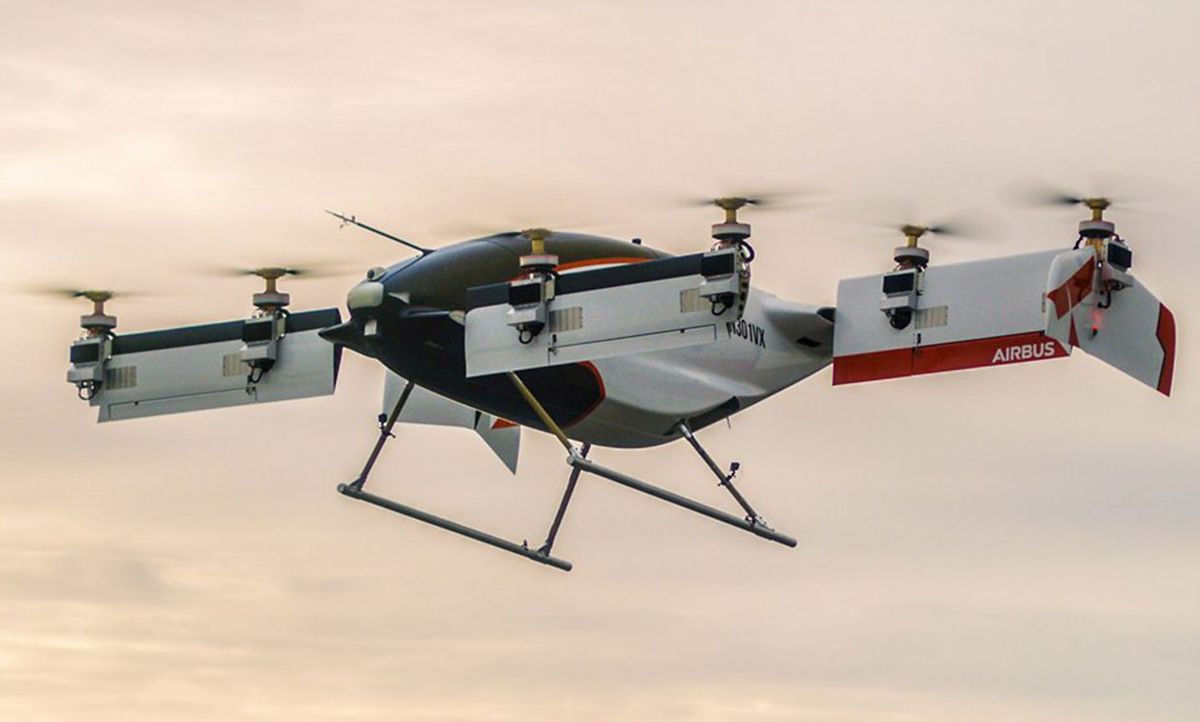Airbus says that people around the world are increasingly open to urban air vehicles, either to fly around in themselves or merely to whisk a hot pizza to their home. Such a service might at first require human pilots for passenger flights, but the idea is to eventually move to Jetson’s-style automated flight.
Of four places the company surveyed, Mexico City was the most amenable to the idea, with 67 percent in favor. In Los Angeles, the tally came to 46 percent; in Switzerland, to 32 percent; and in New Zealand, to 27 percent. Younger respondents were the most open to the idea, with 55 percent overall in favor.
Such market research is the sort of thing a company does when it's preparing pilot programs, or at least preparing safety regulators to consider such programs. And indeed, Airbus plans to roll out aspects of a new air traffic control system that could support such vehicles next year.
“We’ll use it this summer to support helicopter service in cities in Europe,” says Jessie Mooberry, who heads deployment for Airbus UTM (the letters stand for urban traffic management). “We provide the underlying aviation-grade platform and services that go on top, for weather, risk assessment, a digital backbone for automated aircraft—small imaging drones or mobility drones.”
Mooberry declined to say which cities in Europe would participate, or whether any element of unmanned flight—say, using delivery drones—might be featured. Helicopters already fly in many cities, she noted. The new digital infrastructure will let them do certain undisclosed things that they can’t do now.
Airbus UTM is a graduate of A3 (pronounced “A cubed”), Airbus’s idea factory in San Jose, Calif. It has a sister group for vehicles, including Vahana, which is developing an air taxi, as well as an unmanned fleet.
Among the problems these Airbus city-flying fledglings must solve are safety, noise, and traffic control. The safety part is a work in progress, and it means human pilots will stay on board in manned flights, and on the ground but within sight for most unmanned ones, though safety regulators around the world are loosening that last requirement in certain test programs. A drone service now delivers groceries in Reykjavik beyond the line of site of the operator.
The problem of noise, according to the Airbus survey, has to do with both the loudness and the quality of the sound. “How often you hear the sound matters, and the pitch of the sound; and how low it’s flying, and whether you can see the vehicle,” says Mooberry. “Some people say the new urban aircraft will be absolutely silent. True, multi-rotor drones will be high-pitched, but not a fixed-wing craft.”
As for traffic control, the ultimate vision of letting robotic drones manage their own flight patterns seems far off. You’d need a reliable “sense and avoid” system that could enable every pizza-lugging drone to swerve away from other drones and the odd bird, and those just aren’t ready yet. Airbus UTM expects to work with human air-traffic controllers.
“Human controllers will be more like system managers,” Mooberry says. “With thousands of aircraft in a given area, it’ll be impossible for a person to vector each one to its flight path.”
Philip E. Ross is a senior editor at IEEE Spectrum. His interests include transportation, energy storage, AI, and the economic aspects of technology. He has a master's degree in international affairs from Columbia University and another, in journalism, from the University of Michigan.



